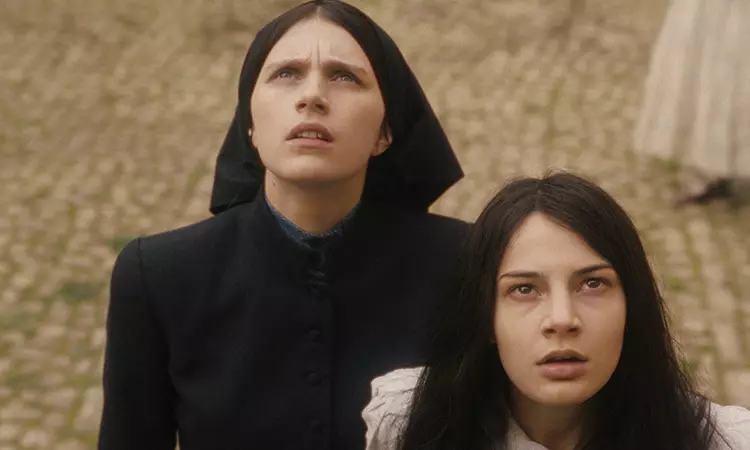The resurgence of classic horror films often brings with it a complicated relationship with nostalgia. For those who harbored a fondness for Richard Donner’s seminal work, “The Omen” (1976), the arrival of “The First Omen” is imbued with a sense of both excitement and trepidation. This new film attempts not only to reignite those spine-chilling memories but also to carve out its own identity within the franchise. While it encapsulates a grim atmosphere that resonates with the original, it also confronts the challenges of innovation and storytelling in the horror genre. Arkasha Stevenson steps into the role of director with this endeavor, promising a narrative steeped in both reverence for the source material and a fresh perspective.
From the very onset, Stevenson draws upon the “The Omen’s” hallmark aesthetic: a foreboding atmosphere underscored by a melancholic score and somber visuals. The film opens with a palpable sense of dread—overcast skies and bare branches create a visually arresting prelude that echoes the original’s chilling narrative. However, it is not merely a reproduction of the aesthetic feast laid out by Donner. While the ominous mood cloaks the film, this new installment sprinkles hints of originality that breathe life into the well-trodden narrative.
Set against the backdrop of Rome in 1971, “The First Omen” aspires to unravel the origins of the malevolent Damien, with Margaret, played by Nell Tiger Free, at its center. The film’s choice of location adds layers of mystique and enhances the supernatural elements woven into the plot. As Margaret arrives at a convent tasked with the care of a troubled teenage orphan, viewers are invited to experience her dark discovery amid the lush, historical tapestry of Rome—a city equally famous for its beauty and its storied past of malevolence.
Character Development and Themes
The thematic focus on motherhood and female perspective emerges as a formidable aspect of this narrative. Margaret’s journey reflects societal ideals surrounding femininity, caregiving, and the inherent darkness that lurks beneath these seemingly benign roles. With scenes depicted through a woman’s lens, the film confronts the often uncomfortable realities of life and birth, exemplifying the struggle of nurturing amidst a looming sense of evil. Bill Nighy’s performance as a grim priest further emphasizes this exploration, stirring the narrative pot by introducing the unsettling notion that creation is often intertwined with chaos.
Despite its rich thematic undertones, the script falters in places, revealing unnecessary details that sometimes detract from the audience’s experience. A particular scene following a gruesome accident feels excessively explicit, undermining the element of suspense that is critical in horror storytelling. The beauty of the horror genre lies in the power of suggestion—less is often more, and this film occasionally loses sight of that.
Although “The First Omen” has commendably interwoven its storyline with the lore established by earlier films, it walks a perilous line between homage and redundancy. The seamless links to the original narrative, particularly during the concluding sequences, offer a satisfying flourish for dedicated fans. Yet, there lingers the question of whether this film can truly stand as its own entity amidst a sea of sequels and reboots. Arkasha Stevenson’s craft in controlling and maintaining the eerie ambiance is commendable, yet it is counterbalanced by a sense of familiarity that might leave some viewers yearning for greater exploration of new narratives.
As audiences brace themselves for another summer inundated with cinematic remakes, “The First Omen” extends a flicker of hope for the horror genre. While it successfully reignites interest in the franchise and offers some genuinely exhilarating moments—most notably a robust performance from Nell Tiger Free—it also reflects the challenges inherent in reviving a beloved classic. Ultimately, while the film deploys several clever techniques in atmospheric storytelling and character exploration, the allure of The Omen remains its own double-edged sword, inviting both applause and critique as it navigates its path forward in an ever-evolving cinematic landscape.

